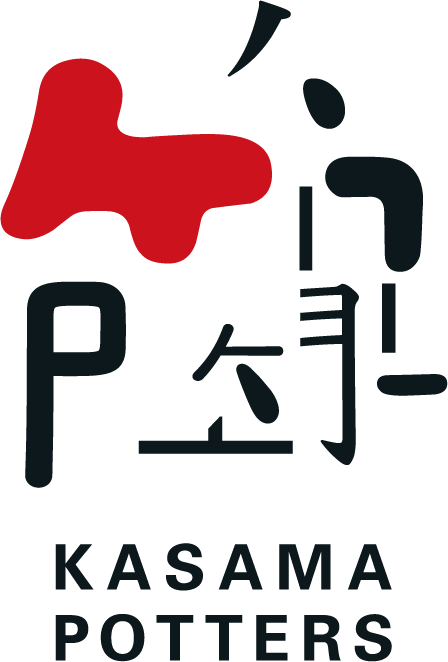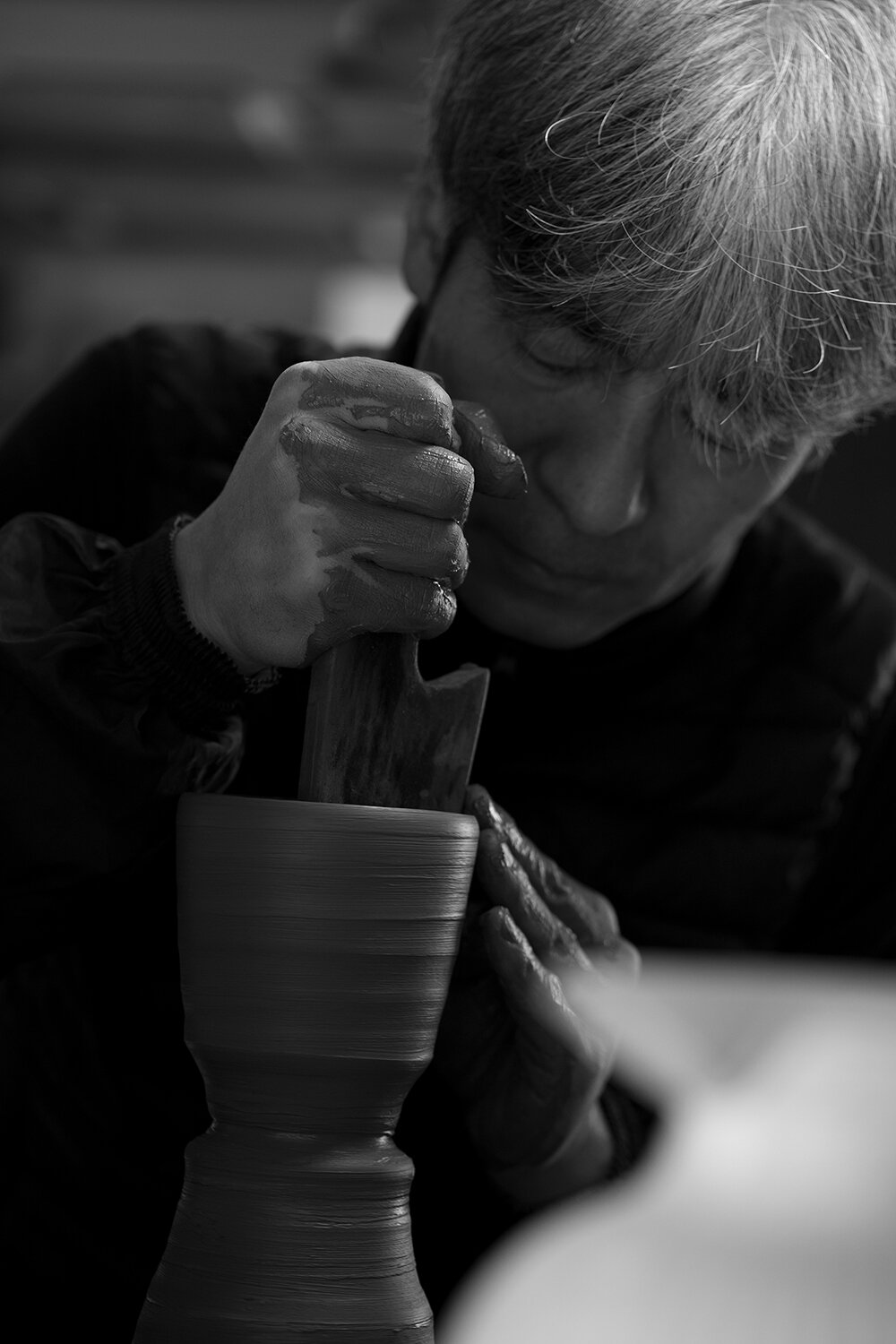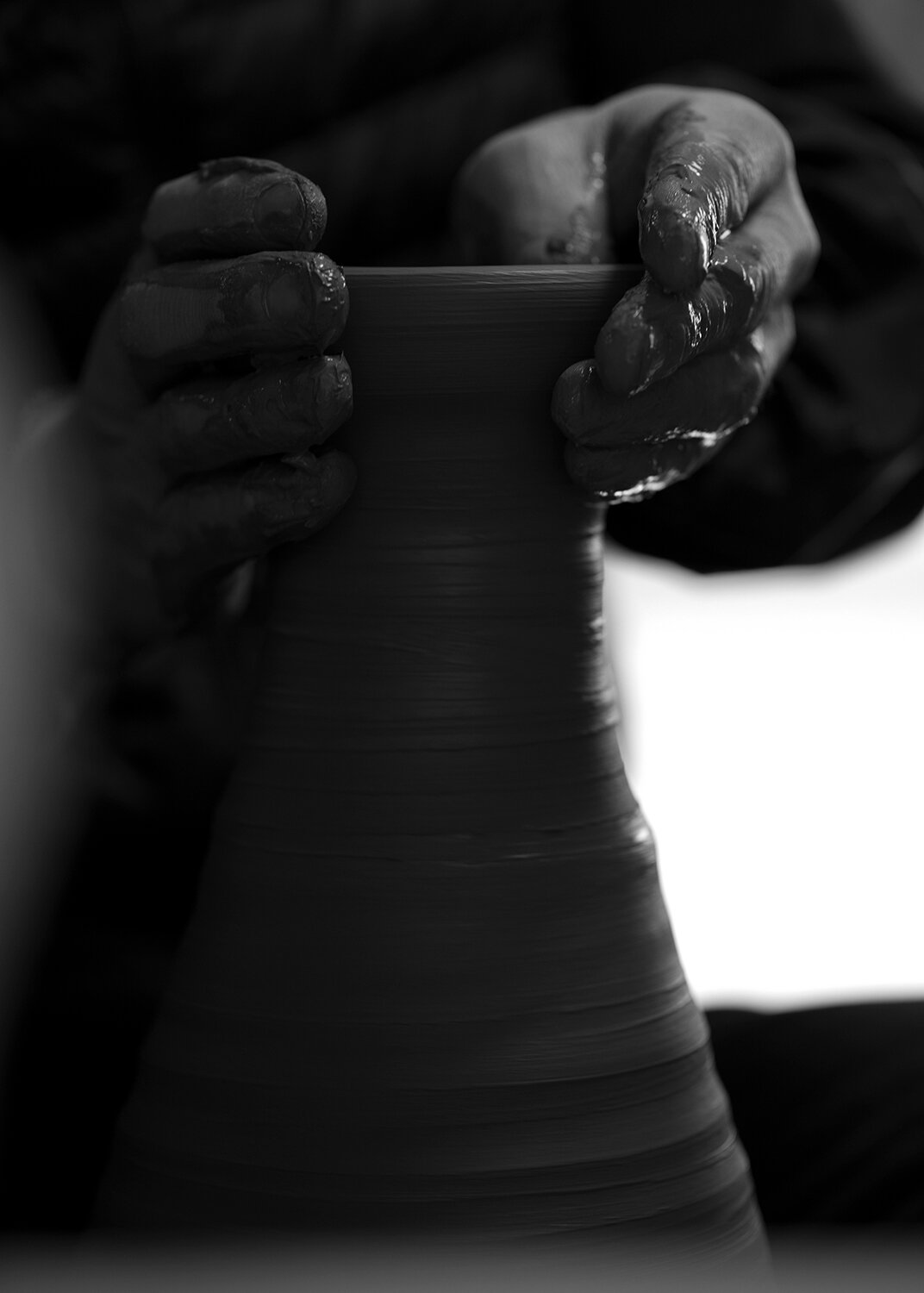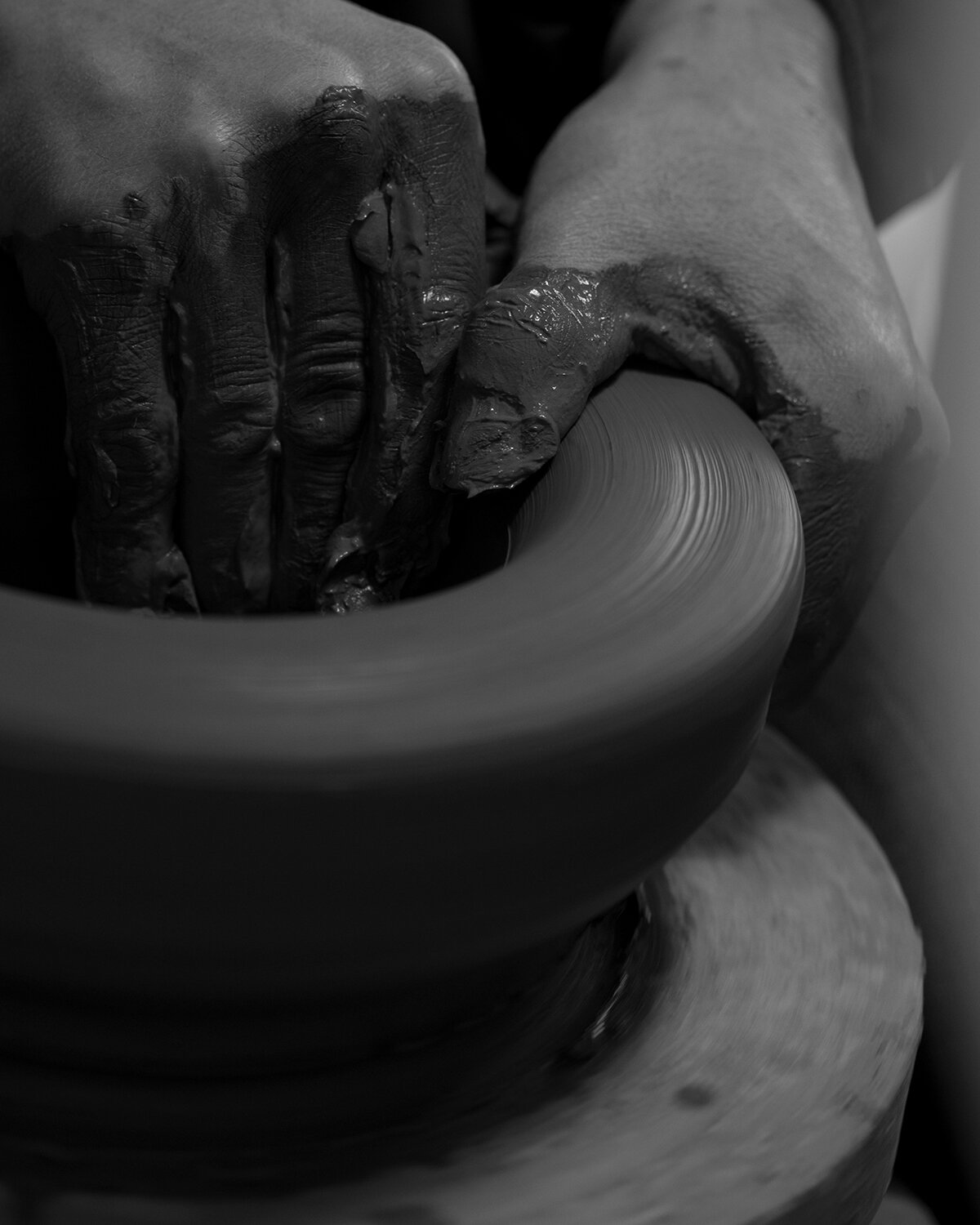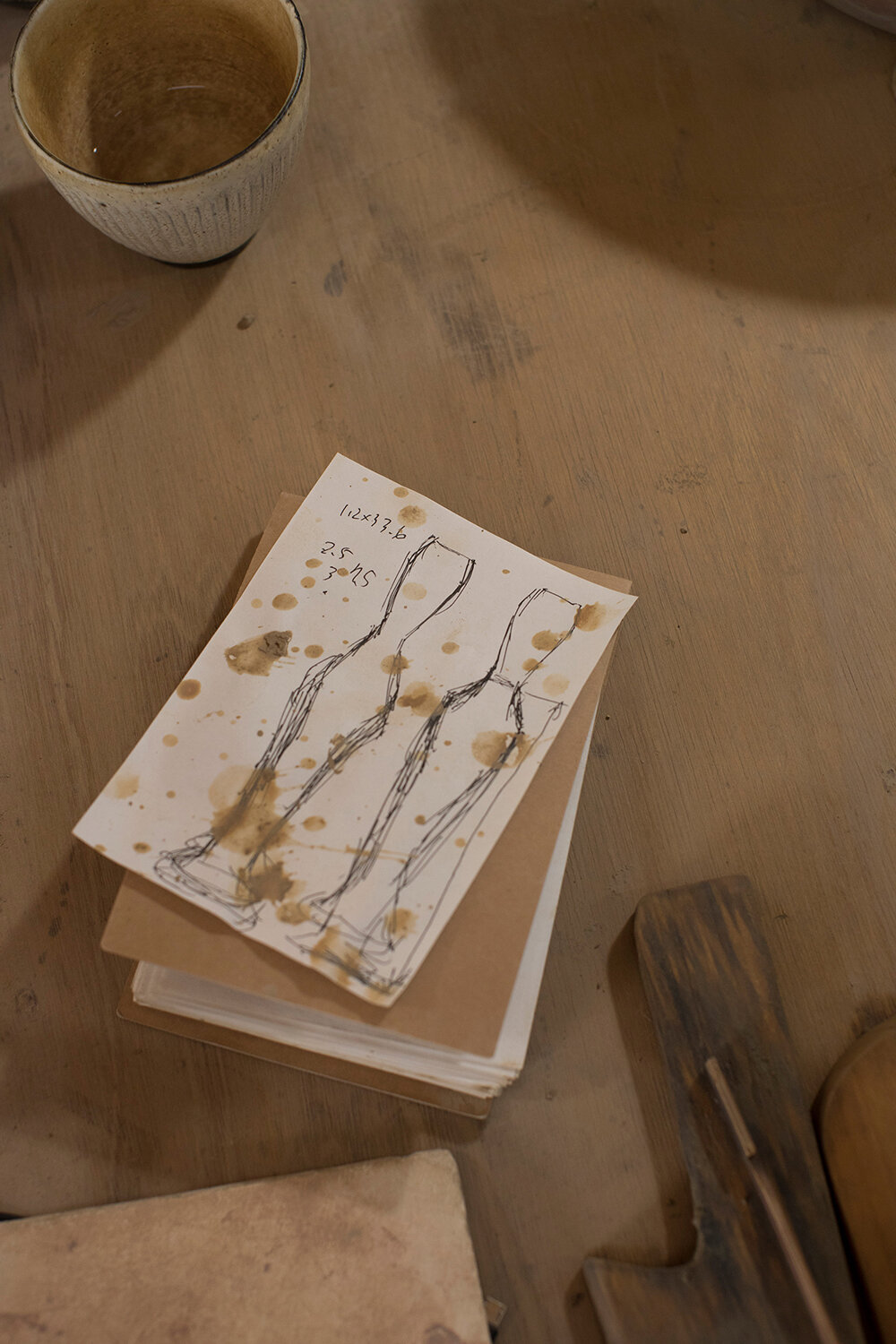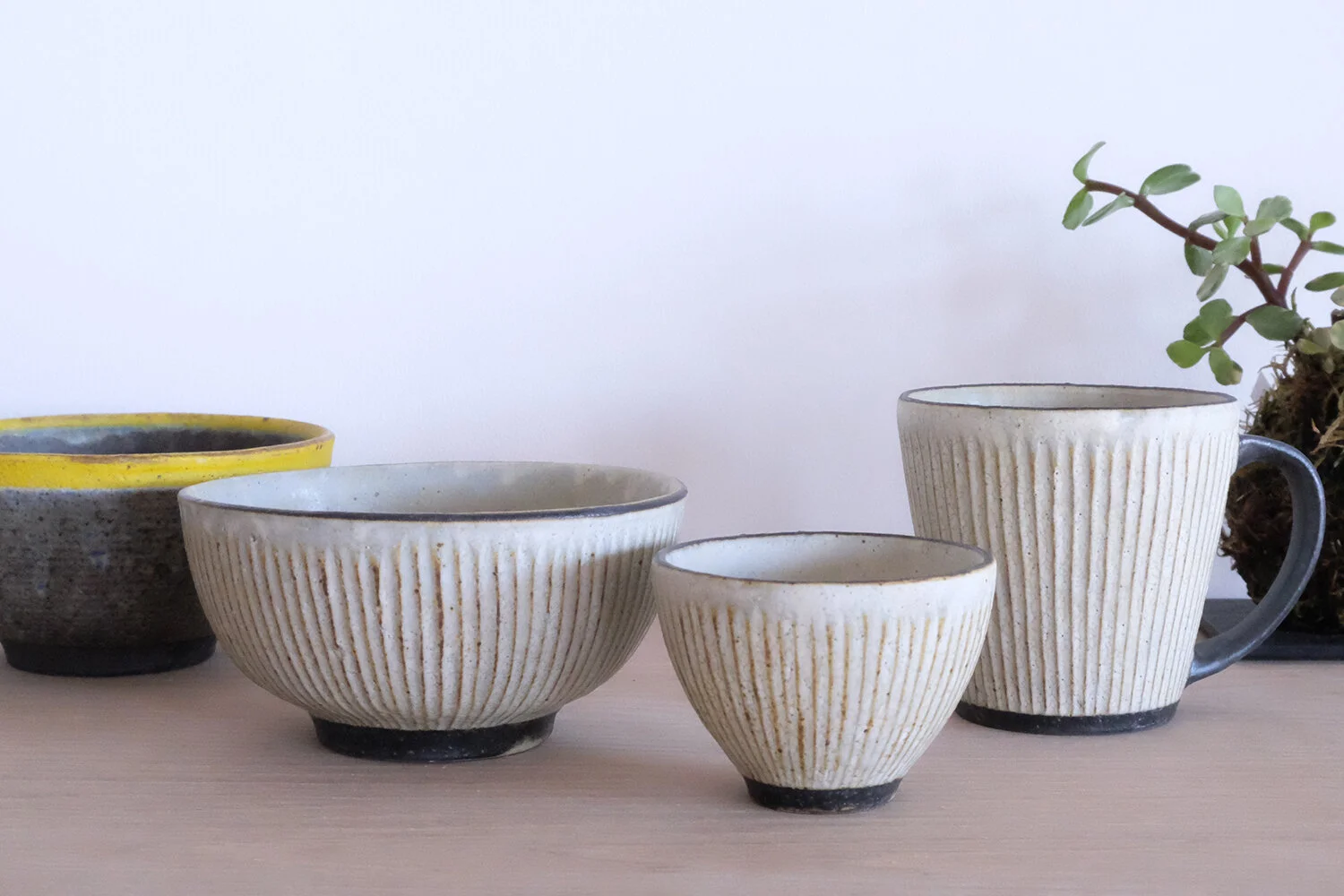An interview with celebrated Kasama potter Akio Nukaga
Born in Tokyo, Akio Nukaga is considered the face of modern Kasama ceramics. Akio moved to Kasama at the age of twenty-five, where he honed his craft. From 1989, he worked at Kasama’s Kōzan-gama kiln (a collective which is central to the modern identity of Kasama’s ceramics), before establishing his eponymous ceramic studio in 1993. During the 1990s, Akio was part of an influential group of individual ceramicists who initiated a return to craft in the wake of Japan’s ill-fated ‘bubble economy’.
Akio Nukaga has built an international presence, particularly in the US, where—as a result of a connection with renowned US potter Adam Silverman—he has been involved with numerous exhibitions and collaborations over the past decade. More recently, Akio was part of a team of craftspeople asked to contribute to the eclectic interiors of the Ace Hotel’s new Kyoto outpost (the high-end hospitality chain’s only location outside of North America).
Akio Nukaga’s work is influenced by several styles, including Western modernist design and mid-century furniture. An experienced potter, Akio’s pieces are typically soft and minimal in appearance, and feature his signature application of shinogi lines (a decorative technique where parallel grooves are carved on the surface). With a truly practised eye, Akio’s pottery is an earnest expression of harmony, balance, and ritual.
In this thoughtful interview, Akio Nukaga offers an insight into his creative process, the relationship he enjoys with both Kasama and ceramics, and his thoughts on the Japanese aesthetic.
What is your creative process? Can you tell us about your ceramic technique?
(AN) My process has three stages.
Firstly, the base element is formed on the wheel. When the piece has been thrown, I trim the foot and complete the early stage.
Secondly, I decorate the surface using pale slip and shinogi lines: before the clay dries, I carve shinogi lines into the surface. Once it is completely dry, the piece can then be bisque-fired [the first firing].
Thirdly, the clay is reduction-fired in a gas kiln. After the piece has been bisque-fired, I apply pale slip. Once dry, I use a matt glaze and reduction-fire the piece at 1240 degrees.
Kasama yaki is unbound by tradition—it is not defined by a particular ceramic style. As a Kasama potter, how important is the ability to create freely, without constraint?
(AN) Kasama was an area known for ceramic urns and mortars, but with the increased use of plastic the region fell into decline in the post-war period. As a consequence of that decline, many individual potters were able to enter the region and establish Kasama-ware as it is today. The old Kasama-ware no longer exists, but Kasama is now known as a region for studio ceramicists.
There are many types of ceramicists working across Kasama. For this reason, there are many opportunities to learn new processes and to be inspired. It’s something that seemed normal to me and I did not always appreciate the importance. However, it is an environment I have come to be grateful for.
In May each year, Kasama holds the Himatsuri ceramics festival, a very important event for potters and the region, and a source of much pride. It is a place where Kasama potters come together, building connections between themselves and with ceramic consumers. In recent years, the number of visitors has increased a lot, something I feel is attributable to the strength of the welcome offered. I would like people from around the world to see it as well. Unfortunately, I have been too busy in more recent years to exhibit myself.
How has Kasama, as a place, influenced your ceramic style? What makes Kasama an interesting area for ceramic work
(AN) In Kasama you can find clay with a high iron content—a kind of red clay. This material was a real characteristic of the original Kasama-ware. I worked with this clay for the first time when I came to Kasama and felt its strengths. In particular, I learned the technique of applying white slip as decoration on the red clay and have since used this in my work. I will say that in the end, it’s not a clay I found compelling on its own, but one I blended and adapted in order to work better with it.
Compared to the raw material for porcelain, the rank assigned to red clay is pretty low. Once white slip is applied, it has its own natural material expression. I think it fits well with current lifestyles.
If I had trained in the nearby pottery settlement of Mashiko [a town that shares a strong ceramic heritage with Kasama], I think I would be making completely different work today. Using Mashiko’s clay and influenced by its aesthetic, I would have tilted in that direction. So put another way, I can say that the style of Kasama has had a great influence on my own ceramic expression.
Kasama made its name as a place that produced urns, mortars, and items for life. I have this philosophy in my own work too, and I think it is another reason why it’s a pottery region in which I have found my home.
Describe your relationship with ceramics and why you chose this art form?
(AN) In my work I try to bring together function with decorative qualities, especially for tableware. This perhaps stems in part from my roots as a craftsperson. I endeavour to search for the ideal size and elements that will make each piece easy to use. I want to find balance in the proportions of the forms I make, but with a natural feel (this is different from a sense of ‘simplicity’ and something I find hard to describe). Spatial harmony is also important. That feeling created by different cuisines and the balance between pieces on the table are all a part of the things I work to design.
For my pleatwork vases, the sculpture of the form is the element on which I concentrate most. Although I also think about the sense of movement created by the vertical shinogi lines and the equilibrium they find with the form. The gourd-shaped work I make is one such form that’s based on this feeling of movement.
I have also studied, and been influenced by, Western modernist design. I would be happy if I could imbue my work with some of the lifestyle qualities expressed in mid-century furniture. At the same time, while I retain a strong sense of realism, I dream too of the deeply felt worldview such as that expressed in [Japanese designer] Shiro Kuramata’s ‘Miss Blanche’ chair. With each piece, I try to refine and bring something of this into what I make.
Thinking about the UK market and consumer, can you describe the Japanese aesthetic? How is this conveyed in your work?
(AN) I think the term wabi-sabi is well-known in the West. To put it simply: ‘wabi' refers to material qualities, while ‘sabi’ is the degradation that occurs over years and the stillness within this ageing. Perhaps you could say it is a quality of beauty, something that hints at an essence of things beyond moments in time and space. I’m Japanese and I find it hard to explain what it means!
If we were to mention another Japanese concept, we could speak about ‘beauty in imperfection’. Rather than admiring completeness, this is about seeking aesthetic satisfaction where an element is missing. We could even say this absence creates a space in which to insert one’s imagination.
The Japanese sense in my work is perhaps not so much in these concepts, but rather in ‘wa’ (harmony). Here, an overall sense of balance [across a number of ceramic pieces] is an aim that exceeds individual pieces of ceramic expression. In this way, the items lack something when presented on their own. That said, whether it is tableware or cups, there can be an initial, and enjoyable, sense of complement when paired with food. Also, it is open to the user to find value in the material sense of the objects as they become part of life—I believe this is very important.
Similarly, for flower vases, spatial design and harmony are important. The work itself does not shout out, but I hope retains an appeal and comfort when placed within a home environment.
What can people in the UK and Europe learn from a Japanese approach to making ceramic wares?
(AN) I think it is most likely in the feel for materials. Japanese people have a strong attachment to the materials used in making. Moreover, we love time-consuming material processes. Through work and ritual, we strive to get the best from raw elements. I would say this is what can be learned from Japanese ceramics. In particular, there are many ceramicists who dig their own clay by hand, then fire it using wood-burning kilns. That sense for materials is deep.
What do you hope to learn from your participation in the Kasama Potters project?
(AN) To think about my work in this way, and to present it to you, is interesting indeed. I am also interested in the reaction it will receive.
